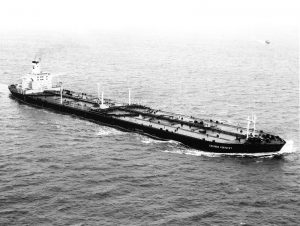Cultural Change Analysis
Introduction
 Three major markers define the performance of a ship: design including the propulsion, weight and rudder. Compared with an enterprise you will find the same three markers: design including the propulsion, stands for image, looks and type of people or type of professionals. Weight stands for the “way we do it”, the “way we communicate here” and the momentum pushing forward. Rudder stands for the structure, the hierarchy, the direction, the change of the course. But everyone that steers a ship knows: “a good helmsman is a lazy helmsman”, because every movement of the rudder slows down the ship.
Three major markers define the performance of a ship: design including the propulsion, weight and rudder. Compared with an enterprise you will find the same three markers: design including the propulsion, stands for image, looks and type of people or type of professionals. Weight stands for the “way we do it”, the “way we communicate here” and the momentum pushing forward. Rudder stands for the structure, the hierarchy, the direction, the change of the course. But everyone that steers a ship knows: “a good helmsman is a lazy helmsman”, because every movement of the rudder slows down the ship.
Very Large Ships (VLS) that weight up to 500,000 tons and more, take at full speed 20 minutes before they fully turn. This is due to the momentum caused by the design and the weight of the ship. The same characteristics you see in enterprises. When necessary, hierarchy and structure dictates: What has to be done, when and how and who communicates with whom about what. Depending on the type of people and the seize of the organization it is predetermined, how fast/how slow the enterprise responds to hierarchical input and how easy it returns to inertia and persists or overshoots.
Cultural change diagnoses investigates the interaction between: hierarchy, design, population, the “way we do it here” and “the way we communicate here”. The patterns derived from the diagnosis, are responsible for the recurring successes, the recurring problems and the effects on the capability to change. This allows targeted cultural interventions that can be implemented quite fast. In the following text, I explain how the patterns are analysed and which type of action might be required.
Cultural Change Analysis:
Step 1: Strategy
In this first step the diagnosis is analyzing the formal communicated “Environment-Mission-Strategy-Outcome” relationship.
Step 2: Structure
The formal tasks, job descriptions, responsibilities and authorities are analyzed.
Step 3: Politics –Autonomy
Formal tasks, job descriptions are analyzed
Step 4: Politics – Authority
Formal responsibilities and authority are analyzed
Step 5: Communication
Mission-Strategy-Outcome-Formal issues are canalized
Step 6: Interaction
Formal hierarchy interaction with interest groups are analyzed.
Step 7: Satisfaction actual
The expectations of individuals are analyzed.
Step 8: Satisfaction future
The required expectations are analyzed.
Step 9: Outcome
Formal outcome in relation to the actual`s is analyzed.
Training Agenda: Cultural Change Analysis
A program in Cultural Change Analysis for Senior Consultants, Change Managers and Interim managers is organized in a controlled setting. This will be a mix between technical training in motivational interviewing, on the one hand and coaching in real life setting and in pattern analysis on the other.
